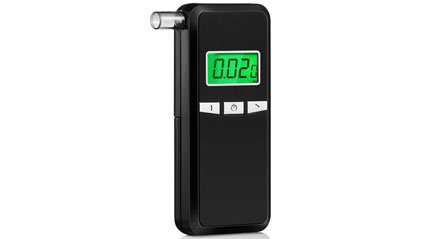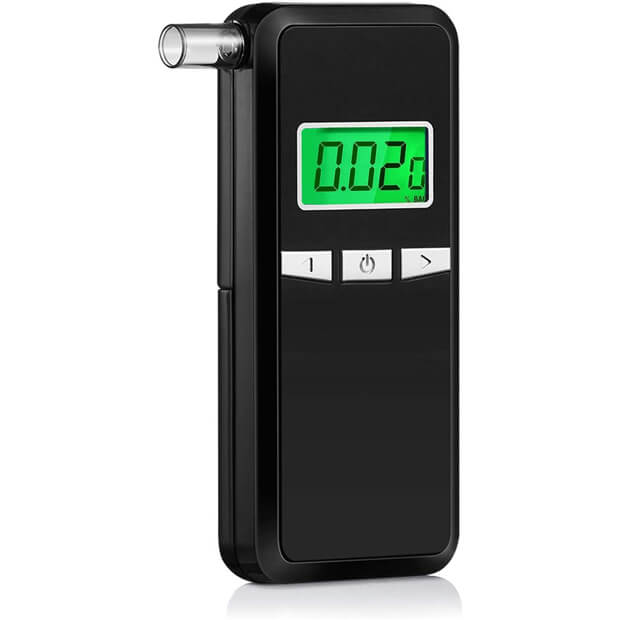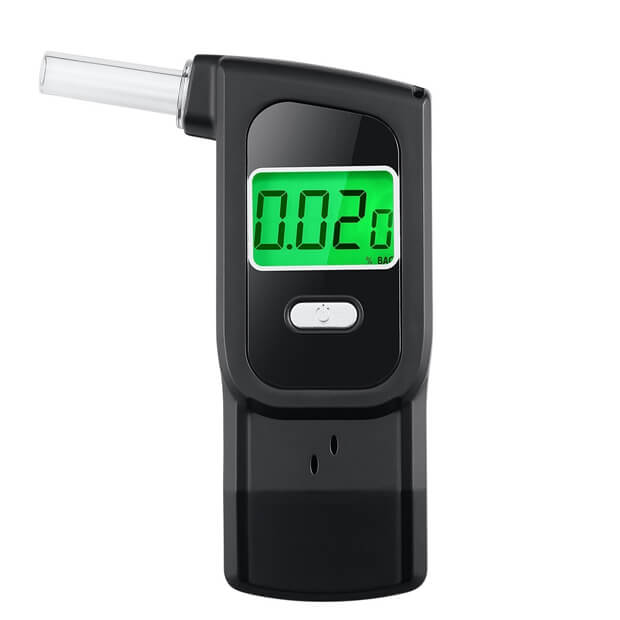What is Alcohol percentage tester? Beginner’s Guide


Today, the most countries permissible blood alcohol percentage tester content is 0.35 ppm or 0.16 ml of alcohol per 1 liter of exhaled air, while the standard norm. It is according to the Vienna International Convention on Road Traffic, is 0.8 ppm.
Accuracy of research in alcohol percentage testers
All alcohol percentage testers can reliably determine whether alcohol is present in a respiratory sample. However, the accuracy of the test results can vary significantly, so the question arises as to what is the error of the breathalyzer.
Models of alcohol meters usually comeinto two categories - for personal use and for professional use. Professional breathalyzers offer a high level of accuracy and sensitivity, they use advanced sensor technology. All instruments must calibrate periodically.
What effects on performance?
There are several factors that can affect the accuracy of an alcohol percentage tester. Knowing these points can help people avoid excessive performance and serious trouble with the law.
The breathalyzer reading can reduce by waiting at least 20 minutes after drinking alcohol. The fact is that the alcohol left in the mouth is more concentrated than exhaled from the lungs.
Remember that the breathalyzer is only a mechanism that can show inaccurately under the influence of external factors. Breathalyzer error can be caused by the following potential factors:
1. What effects on body temperature?
The ratio, widely uses to determine blood alcohol content, is true in the presence of a normal body temperature of 36.6 ° C. Higher temperatures will overestimate the actual alcohol content due to higher volatility (liquid vapor pressure).
An increase in body temperature of only 1 ° C leads to an increase in results by 7%, as the lungs will be artificially increased more evaporated alcohol. Be careful if you have a cold or flu. We can accurately check alcohol level with alcohol percentage tester.
2. Cellular composition of blood
Blood contains a weighted amount of cells (such as red and white) and proteins and, therefore, only partially fluid. The accepted ratio of 2100: 1 is based on average on the fact that the cell volume is 47%.
A person with a lower cell volume will have a falsely elevated blood alcohol level, because the amount of alcohol in 2100 ml of respiration from the lungs will dissolve in a slightly higher amount of fluid and, therefore, will have a lower concentration.
3. Foreign substances.
Substances present in the mouth and containing alcohol can cause erroneous breathalyzer readings, because the amount of alcohol vapor they produce is even greater than the amount of alcohol exhaled from the lungs.
4. Why manufacturer change Calibration cylinder.
The alcohol percentage tester should calibrate periodically after every 200 tests to ensure accuracy. Recalibration performs by the manufacturer. In some cases, the manufacturer may change the calibrated cylinder.
5. Software. Breathalyzers run on special software, just as computers rely on operating systems that can cause accidental errors or crashes.
6. Human error. Despite their advantages, alcohol meters still require some attention to detail.
7. Environmental factors.
Breathalyzer errors can cause by the presence of paint vapors, varnish and chemicals such as plastic and glue.
8. Ambient temperature.
The alcohol percentage tester can be very sensitive to ambient temperature. In some cases, it will give false evidence if it is not adjusted and calibrated according to weather conditions.
9. Previous uses of breathalyzers
Some studies have shown that breathalyzers can support small but significant data from a preliminary result. This figure may be enough to raise your threshold.
- The permissible level of alcohol in the blood is 0.35 ppm
- The permissible level of alcohol in the blood is 0.35 ppm
10. Some physiological conditions
The error of the alcohol percentage tester can increase some physiological features of drivers. Some people (including those on a diet and diabetics) may have acetone in their breath, which will increase the readings of the device.

Myths about the deception of the breathalyzer
There are many legends about how to cheat a breathalyzer. Many of them are myths and cannot use to reduce testimony.
Sucking pennies
There is a long-standing claim that sucking money will reduce the amount of alcohol that an alcohol percentage tester detects, because copper somehow alters or eliminates alcohol in exhalation. Copper does not affect this; in addition, pennies are made mainly of nickel and cannot change the conclusions of the test.
Some alcoholic beverages
It is believed that some alcoholic beverages may not affect the breathalyzer reading. This is incorrect. The test is not set up to distinguish rum, vodka or any other beverage you drink. It just detects alcohol, and it doesn't matter what you drank.
Eructation
The basic idea is that gas from the stomach will contain less alcohol than gas from the lungs. While this sounds good in theory, in practice belching will give you similar or even higher breathalyzer readings.
Mouthwashes or aerosols
If your breath smells of mint, will the alcohol percentage tester not detect alcohol? Not true, although aerosols, chewing gum or liquids mask the smell, they will not reduce the amount of alcohol. The breathalyzer uses chemical reactions to determine if alcohol is present in the breath, and these chemical reactions cannot change by liquids.
In fact, many aerosols or mouthwashes can increase blood alcohol levels because they contain alcohol.
Eructation
The basic idea is that gas from the stomach will contain less alcohol than gas from the lungs. While this sounds good in theory, in practice belching will give you similar or even higher alcohol percentage tester readings.
Hyperventilation, respiratory arrest
The oft-cited study found that hyperventilation and energy exercise did reduce the rate by as much as 10%. Conversely, respiratory arrest actually increased the test results by 20%. Unfortunately, such actions are reckless and catch your breath - a behavior that will undoubtedly attract the attention of law enforcement agencies.
Is mouth Battery can change the breathalyzer reading?
Many alcohol percentage tester meters use current to measure blood alcohol levels, so some drivers believe that a battery in their mouth will change the breathalyzer reading. In fact, it has no effect on test results. In addition, the battery is difficult to hide in your mouth when talking to a police officer.
Is it possible to deceive an alcohol percentage tester? If you think it's possible, you're just fooling yourself. The breathalyzer is a powerful tool designed not only to determine the amount of alcohol in the blood, but also to help drivers control their alcohol consumption.
Its principle of operation bases on chemical reactions in the body, so removing the smell; you will not remove alcohol from the blood. In order to pass the test, you just need not to drink or sober up well.
About SZEEK
SZEEK is a company that specializes in manufactur-ing high-precision breathalyzers. We are the top manufacturer of breathalyzers in China. More
